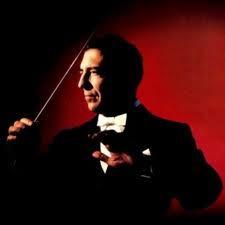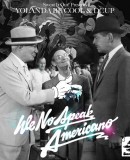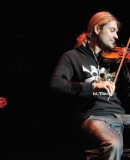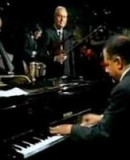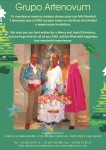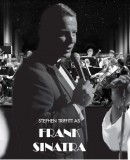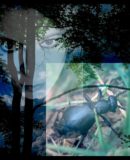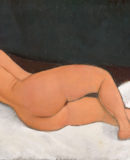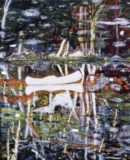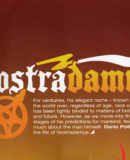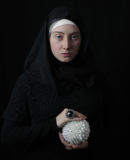Greensleeves - An English Evergreen
Greensleeves – Musical arrangement by Mantovani and his orchestra.
Greensleeves has always been popular with people from all over the world, and I am no exception to being attracted to this beautiful melodious and haunting song that touches the heart, creating and conjuring up visions of a time of simplicity, honour, chivalry and romantic love, either for a person or a country. It is always associated with England, it’s history, it’s people and fresh green rolling countryside.
Hundreds of interpretations of this great piece of music have been created and performed all over the world, but my two favourites, that in my opinion stand hand and shoulders above all others, are the arrangements by the great British composer Ralph Vaughan Williams (1872-1958) who composed an orchestral piece in 1934 entitled Fantasia on “Greensleeves” and another British musician but originally from Venice, (one of the major homes of music) the ever popular Mantovani and it’ s his unique musical interpretation you can hear on the video above.
As an aside, my father was at the time, a new up and coming tenor living in pre-war London and he sang on occasions for Mantovani’s newly formed orchestra, until World War Two cruelly interrupted his studies and blossoming career. However over the years, he told me many positive stories about Mantovani and his early days with his orchestra.
Greensleeves” is a traditional English folk song and tune, created in the Italian form called a “Romanesca.”
In 1580 a ballad by this name was registered at the London Stationer’s Company as “A New Northern Dittye of the Lady Greene Sleeves”. Later it appears in the surviving A Handful of Pleasant Delights (1584) as “A New Courtly Sonnet of the Lady Green Sleeves. To the new tune of Green sleeves.” Preserved in the Cambridge University libraries are various documents on the song and the tune is found in several late 16th century and early 17th century sources, such as Ballet’s MS Lute Book and Het Luitboek van Thysius.
There is a enduring belief that Greensleeves was composed by Henry VIII for his lover and future queen consort Anne Boleyn. Boleyn allegedly rejected King Henry’s attempts to seduce her and this rejection may be referred to in the song when the writer’s love “cast me off discourteously”. However, Henry did not compose “Greensleeves”, which is probably Elizabethan in origin and is based on an Italian style of composition that did not reach England until after his death.

In Shakespeare’s The Merry Wives of Windsor, written around 1602, the character Mistress Ford refers twice to the tune of “Greensleeves” and Falstaff later exclaims: Let the sky rain potatoes! Let it thunder to the tune of ‘Greensleeves’!
These allusions indicate that the song was already well known at that time. The earliest known source of the tune (Trinity College, Dublin ms. D. I. 21, c. 1580 – known as “William Ballet’s lute book”) There are also various stories in circulation about the lyrics and one intriguing interpretation is that the lyrics are about a certain Lady Green Sleeves who was a promiscuous young woman and perhaps even a prostitute. In those times, the word “green” had sexual connotations, most notably in the phrase “a green gown”, a reference to the way that grass stains might be seen on a lady’s dress if she had made love outside.
An alternative explanation is that Lady Green Sleeves was not immoral as incorrectly assumed as her “discourteous” rejection of the singer’s advances written in the lyrics, supports the contention that she is not. In Nevill Coghill’s translation of The Canterbury Tales, he explains that “green [for Chaucer’s ] was the colour of lightness in love. This is echoed in ‘Greensleeves is my delight’ and elsewhere.” so this extra knowledge supports the case that the song was of a romantic nature written for a lady of sensibility.
The lovely Greensleeves” tune has been used in various productions, one being the hymn “What Child Is This?” by William Chatterton Dix and a variation was used extensively in the 1962 film How the West Was Won as the song “Home in the Meadow”, lyrics by Sammy Cahn, performed by Debbie Reynolds.
The music was used by the great Italian Composer Ferruccio Busoni’s in Act 2 Scene 1 of his opera Turandot, which begins with with the tune of Greensleeves. Gustav Holst’s Second Suite in F for Military Band incorporates the tune in its final movement. ( Some info from Wikipedia)
But the real beauty of this marvellous tune is it’s melodious simplicity, touching emotion and elegance, as well as lack of musical artificiality that’s probably the secret to its everlasting popularity.
Disclaimer: The views, opinions and positions expressed within this guest article are those of the author Dario Poli alone and do not represent those of the Marbella Marbella website. The accuracy, completeness and validity of any statements made within this article are not guaranteed. We accept no liability for any errors, omissions or representations. The copyright of this content belongs to Dario Poli and any liability with regards to infringement of intellectual property rights remains with the author.

